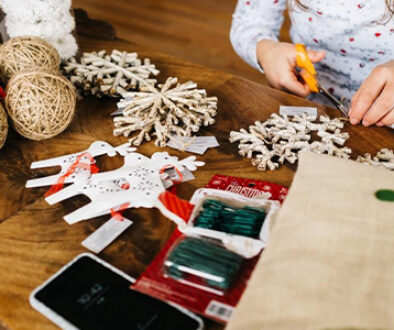Empathy: Give Her A Framework For Understanding Others

Mama, how do you approach teaching empathy to your girl? Do you model it? Use stories? Work together to practice kindness?
I love the way my friend Sissy Goff shares a simple illustration for helping children understand empathy in a book she co-wrote called Are My Kids On Track: 12 Social, Emotional And Spiritual Milestones Your Child Needs To Reach.
I refer to this book often as a mother, a teacher, and as a leader. I mentioned it a few weeks ago in a post about helping girls process their emotions in healthy ways.
In it, Sissy tells a simple story that basically goes like this:
Imagine there’s a little girl playing with a group of friends in the field behind her house.
They’re running through the trees and out into the open field when all of a sudden the little girl falls through a deep hole in the ground. She didn’t see it because it was covered by a patch of grass. But she fell down in there and the hole is deep. Very deep.
So deep that she can’t climb out.
Her friends see what happens and immediately run over to where they saw her go down and they peer over the side of the hole. They can see a little way down but, for the most part, it’s dark. So they lean in close to listen. They can hear her, barely. She’s crying.
Pity is looking down into the hole and feeling sad and sorry that your friend is there.
Sympathy is laying down next to the hole and talking to your friend so that she knows you’re there.
Empathy is climbing down into the hole to sit with your friend to wait until help arrives.
Now, climbing down into that hole can be scary. It’s uncomfortable. Inconvenient. But, as leaders, it is our responsibility to climb down into that hole to understand, share, and bear the weight of another person’s burden. To embrace the discomfort of it – not to be afraid of it, ignore it or pretend it’s not there.
Empathy starts by making the choice to engage another person’s emotions because we believe, we know, we trust that the pain they are experiencing, although it’s real, it’s temporary.
Being empathetic also means choosing to engage a person, even when we don’t agree with or share their point of view. Our aim can be to simply understand where they’re coming from.
Now, science tells us that girls are very empathetic by nature. We’ve talked previously about orientation and how our feminine design has prepared us to relate and connect well with others. We’ve talked about intuition and those feelings we have when something’s not right or that feeling we get when we know someone needs something.
I love Sissy’s picture of what empathy looks like so much because in relationships, in life, we are not going to see eye to eye with everyone all the time. This is a guarantee. If we aren’t aiming for empathy, it can be very easy to misunderstand the other person’s perspective OR in many cases not even to consider it at all.
An easy trap to fall into is that when we disagree with someone, that it somehow implies a measure of distance between us and the other person. It does not. We can have differing points of views, beliefs, perspectives on a particular topic and still maintain a level of connectedness and closeness with the other person, and we do it by having a framework for trying to understand things from the other person’s point of view.
Challenge: When your girl confronts a person with a differing perspective from her own, can she shift away from thinking about it in terms of Agree/Disagree (which implies Connect/Distance) and instead move into a state of curiosity with the intent to understand?
Encourage her to listen and reflect on the following questions whenever she needs to empathize:
Asking good questions can help her develop a better understanding of others and what they’re going through.
Empathy is an essential quality of effective leadership. Like Vulnerability, it is a skill that can be developed and strengthened over time.
Remember, even if your girl doesn’t share the same perspective as someone else, it does not imply there is distance or a disconnect between her and the other person.
Asking the right questions can help move her into a state of curiosity so she can begin to understand and share in the person’s point of view.
Two quick reminders: God sees in us what we sometimes can’t see in ourselves. In the same breath, God sees in others what you sometimes can’t see in them. So together, make a point to try and “see” other people the way God does.
Teaching empathy is more about modeling an approach that tells the other person: “I value what you say. I want to understand your point of view.”
In what ways do you try to teach empathy to your girl? Let me know in the comments below.
Have an awesome day!
If this post struck a chord with you, I want you to know I’m working on a solution to help you grow deeper in your relationship with your daughter and equip her with the tools and skills she needs to lead. If you’re looking for mentorship that includes practical tools and strategies, be sure to watch my FREE video series, 3 Keys To Unlocking Her True Potential. These topics changed my approach to life and leadership forever…




